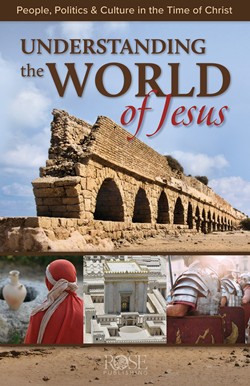
Life for the Jewish people under Roman rule can be characterized by extremes. On one hand, they were free to work, live, and worship; but on the other hand, they were constantly reminded that they were not truly free. Roman soldiers occupied their land continually. The burden of high taxes paid to Rome drove many people into poverty or slavery. Even their religious expressions were restricted in such a way as to ensure Rome was never challenged. Prophets proclaiming God’s judgment were not tolerated by most outside rulers. (See, for example, the execution of John the Baptist; Matt. 14:1–12.)
The Jews longed for a day when they could be free, something the prophets had promised with the coming of the Messiah. (The Tiresias’s Hebrew for “anointed one,” called so because the king was set apart by being anointed with oil.) Most Jews at the time of Jesus held to the belief in a coming Messiah. However, they disagreed about what this Messiah would do. Most believed that the Messiah would be a human who was aided by God to do amazing, miraculous things—a king of Israel and descendant of David. Others, perhaps influenced by more secular thinking at the time, held that the Messiah was a concept that would enable the nation of Israel to come together and overthrow the rulers oppressing them.

Whatever their understanding, they desired a conquering king who would crush their oppressors and free them, establishing Israel as a prosperous nation once again. So, when a miracle-working, humble young man from Nazareth burst onto the scene challenging the established religious leaders and loving “sinners” and also some Roman authority figures, even his own disciples were confused. They had not envisioned a Messiah like him; one who would fulfill promise from God given not only to David, but all the way back to Abraham—a King who rescues not only the Jews, but the whole world, from our greatest enemies: sin and death
Bible Study Questions
Go over this summary with (or perhaps hand out these pamphlets to) your small group or reflect on your own. And then go around and have an open discussion with these questions.
- The Jewish people placed specific expectations on this Messiah, but many of these hopes were not in line with God’s will. Are there hopes or expectations that you have for God to fulfill?
- Think of a time when God answered your prayers in a way you did not expect. What did it feel like at first? How is it part of your testimony today?
- Read John 16:24. Despite our circumstances, what does God promise us?
- Take a moment to pray with your group or on your own. Put any requests on your heart to prayer, then ask God for the wisdom to be aligned with his vision and will.
Did you Enjoy This Excerpt?
Check out the pamphlet Understanding the World of Jesus (Bible study questions not included.)
Understanding the World of Jesus: People, Politics & Culture in the Time of Christ
Experience reading the stories of Jesus in the Gospels in a whole new way! Understanding the World of Jesus is a slimline pamphlet packed with simple summaries, charts, diagrams, and key information about the fascinating time in which Jesus lived.
Features:
- Timeline of key people and events before the birth of Christ
- Family tree of Herod’s dynasty
- Map of the Roman Empire
- Jewish religious and political groups
- Comparison chart of Pharisees and Sadducees
- Languages in the time of Jesus
- Jewish understanding of the Messiah
The apostle Paul wrote that “when the set time had fully come, God sent his Son” (Gal. 4:4). It’s no coincidence that God the Father sent his Son into the world exactly when and where he did. This pamphlet lets you see snapshots of the most important historical, cultural, and political changes that formed the setting to the life and ministry of Jesus.

In this easy-to-understand overview, you’ll get answers to questions like:
- What language did Jesus speak?
- What’s the difference between Pharisees and the Sadducees?
- Who were the Samaritans?
- What happened in the time between the Old Testament and New Testament?
- Who are all those different Herods in the Bible?
This pamphlet’s high-gloss coating makes it a durable, convenient resource you’re sure to keep with you and use time and again. Fits in the back of most Bibles so you can take it anywhere.
Laminated fold out pamphlet, 14 panels, 5.5 x 8.5 inches, ISBN 9781628629439, eBook available.



